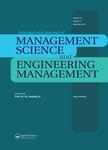版权所有:内蒙古大学图书馆 技术提供:维普资讯• 智图
内蒙古自治区呼和浩特市赛罕区大学西街235号 邮编: 010021

作者机构:Islamic Azad Univ Dept Ind Engn Firoozkooh Branch Firoozkooh Iran Mazandaran Univ Sci & Technol Dept Ind Engn Babol Sar Iran Birjand Univ Technol Dept Ind Engn Birjand Iran
出 版 物:《INTERNATIONAL JOURNAL OF MANAGEMENT SCIENCE AND ENGINEERING MANAGEMENT》 (Int. J. Manage. Sci. Eng. Manage.)
年 卷 期:2012年第7卷第1期
页 面:10-19页
学科分类:12[管理学] 120202[管理学-企业管理(含:财务管理、市场营销、人力资源管理)] 0202[经济学-应用经济学] 02[经济学] 1202[管理学-工商管理] 1201[管理学-管理科学与工程(可授管理学、工学学位)]
主 题:dynamic cellular manufacturing systems mixed-integer non-linear programming intra-cell layout unequal-area facilities cell reconfiguration
摘 要:This paper presents a novel mixed-integer non-linear programming model for an intra-cell layout (ICL) design for a dynamic cellular manufacturing system (DCMS). In a dynamic environment, the product mix and part demands vary during a multi-period planning horizon. As a result, the best cell configuration and part routings for one period may not be efficient for successive periods, and necessitating reconfiguration. A novel aspect of this model is the concurrent making of the cell formations and ICL decisions in a dynamic environment. Another aspect of this model is the utilization of a multi-row machine layout for machines of unequal-area. The DCMS model presented incorporates several design features including alternative process routings, operation sequencing, processing time, parts production volume, duplicate machines, machine capacity, ICL, multi-row layout of unequal-area facilities, continuous-area cells and machine relocation. The objective of the integrated model is to minimize the total costs of intra and inter-cell material handling, machine relocation, machine overheads and machine processing. The main constraints are part processing requirements, machine availability, maximal and minimal cell size, machine time-capacity and the non-overlapping of facilities. A comprehensive example is solved using Lingo software to verify the performance of the proposed model. Also, the computational results show that to some extent the proposed model overcomes common disadvantages in the existing dynamic cell formation models that have not yet considered layout problems of unequal-area facilities.